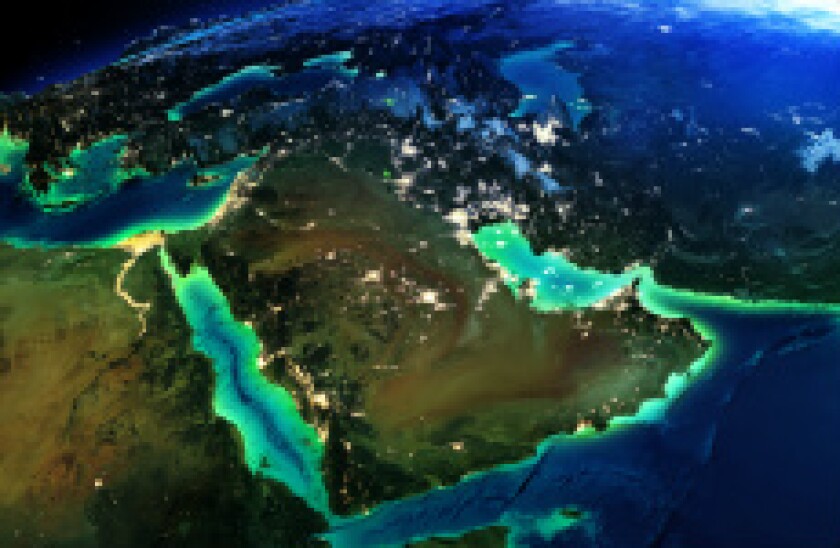Last week, the Arab Republic of Egypt announced it would begin issuing green bonds, making it the first sovereign issuer in the MENA region to do so.
It surprised some in the market, who had expected Morocco or Tunisia to be first.
Either way, there was plenty of disappointment directed at the Gulf states — home to some of the MENA’s strongest and highest rated corporate and sovereign credits — that it wasn't one of them taking Egypt’s step.
After all, almost all of the green or sustainability-linked bonds and loans raised in MENA have originated from the Gulf and in particular, the UAE. Those trades included the region’s first green bond from a bank, the first green sukuk and the first sustainability-linked loan.
So why have none of the Gulf Cooperation Council (GCC) sovereigns set the benchmark for others?
Some claim these issuers are awash with liquidity and have no need to tap capital markets, let alone green capital markets with all the extra work that entails. But can that be true when Saudi Arabia, for example, has become a regular borrower? It issued debt three times last year alone.
Some point to the extra costs of doing a green bond. Green issuers must develop a broad green or sustainability linked framework. That seems like a lot of effort, but most issuers already have a framework to guide them in place: the UN’s Sustainable Development Goals — a broad blueprint for sustainability, which many companies can directly tie their own goals to.
Issuers must then identify a suitable use of proceeds. This is extra work, but it’s also a task that many corporates are incorporating into their businesses. Uses can range from investing in clean transport and green buildings, to reducing carbon emissions.
Then comes the task of obtaining an ESG rating, which, with the rise of independent ratings and research agencies like Sustainalytics, has become easier than ever.
During the life of the bond, tasks such as monitoring and reporting may sound like a burden, but they should be tasks that strong and well-governed credits would be doing to a degree anyway.
So maybe it is an image problem in international markets that is keeping issuers from printing. Some investors fear being labelled as assisting in “greenwashing” — for example, investing in green debt from the likes of Saudi Arabia, home to the world’s largest oil company. It is a similar controversy to investing in transition bonds — debt from issuers which are brown in nature, but are trying to be greener.
There is a perception that GCC countries simply “do not have an ESG culture”. But Poland, Nigeria and Indonesia — all countries with a less than verdant ESG history — have all done successful green deals. And it is arguably more impactful to invest in credits trying to be green than those that already are.
Egypt’s bonds won’t be to everyone’s taste, but as Franck Nowak, vice-president, global sukuk and MENA fixed income at Franklin Templeton said: “In terms of investor demand, MENA sovereigns could be hesitant to issue green bonds, as regional buyers may not be the primary audience. That being said, we do believe that a well-structured and credible green bond deal would attract significant demand.”
Strategically green
Furthermore, green financing fits in with many of these countries’ strategic aims.
Since the signing of the Paris Climate Agreement in 2016, all six Gulf countries have announced ambitious plans to diversify their economies away from hydrocarbons, and increase their focus on renewable sources of energy. And they have no shortage of projects to direct bond proceeds towards.
For example, in its Energy Strategy 2050, the UAE announced it aims to reduce the carbon footprint of its power generation by 70%, while increasing the contribution of clean energy from 25% to 50% of its total energy mix. Similarly, Saudi Arabia’s “Vision 2030” includes a pillar on environmental sustainability, saying that the kingdom will “seek the participation of the private sector and government funds” in such efforts.
Green bond issuance will help solidify these countries’ ESG credentials in financial markets. The scarcity of green assets in general means that even taking into account the costs of bringing a first green bond, there may well be a saving to be made in terms of funding costs compared to conventional debt. It also attracts new investors and delivers fantastic publicity.
There are further examples from across the globe of sovereign success in the green bond market. Chile has spearheaded green sovereign issuance in Latin America while managing to snag tighter pricing on its euro-denominated green issue last year. And Hong Kong managed to diversify and grow its investor base with its 2019 green bond.
Egypt’s green bond is no small feat. The country, which has the largest population in the Arab world and is one of the biggest economies in Africa, is making a public commitment to investing in sustainable projects.
But it is just one country in a region where conditions are ripe for sovereign green bond issuance. Its peers must take inspiration from Egypt’s pioneering work.
